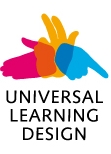1 Introduction
The exhibitions at an aquarium or a museum are to be “shown”. However, many blind or deaf-blind people are tend to come there recently. They say they can enjoy them without seeing unless there should be some guides, touchable exhibitions and explanations in precise. Their comments have made us notice their needs which we have been unaware of. There is a recent idea named “Universal Museum” in which they provide touchable exhibitions.
An aquarium, being different from a museum, has a certain limit to offer touchable exhibitions. It should be better to ask those people directly how they can enjoy them.
We must consider, on the other side of welcoming those people, of a guide system for evacuation at an emergency as much as regular guide maps or exhibitions. The present system of broadcasting announcement and the guides by the staffs would not be proper for them.
We should offer information through terminals as mobiles , rental PDA and others, tactile maps, braille pamphlets for the blind, and for the deaf, signing and texting. Another problem is how to deal with the evacuation of the wheel chairs at an emergency when all the elevators and escalators stopped.
It is a big problem that those customers are coming everyday without any measure and it is common to all the aquariums and museums in Japan. This paper is a proposal of resolution system using electronic communication tools from a human- interface viewpoint. We take Kagoshima City Aquarium as a model case and we hope it will contribute to decrease the rate of victims of those people who need help at an emergency.
2 Background
As for the measures of evacuation for those who need help such as the handicapped or aged people in Japan, almost all of them are for a natural disaster like an earthquake, a tsunami, or a typhoon. The measures of evacuation from a house or from a building are for those without handicaps, and there are only a few researches for a nursing home for the aged.
Emergency Evacuation Planning Guide for People with Disabilities by National Fire Protection Association [1], USA is opened to public, which is further advanced in this field than that of Japan where we have no law like ADA. However it is not directly applicable to Japanese society because the notions and definitions of disability and cultural background are different from them.
3 Research
3.1 Making an evacuation manual for those who need help
These are the steps to make an proposal of the manual in the closed situation like inside of a building.
-
Experiments: Asking them to participate the experiments in the real situation of the exhibitions and also a fire drill in order to point out the problems. To prepare for the unforeseen accident in the experiment, we would provide helpers and supporters and should take some advices in advance from the organizations of those people. Repeated experiments by a few people must be necessary considering a danger of a mass at the same time.
-
Making: Specializing for KCA, checking the evacuation manual in the USA above and some evacuation manuals in Japan as a base.
3.2 Designing an Evacuation Guide System
-
Customer’s Location Estimating System: It is important to know where the customer is at an emergency. Our system estimates the present location of the customers using the customer’s mobile with the Bluetooth devices in many places. The GPS system in the mobile, Skyhook Wireless [2] or Place Engine [3] is not sufficient for the closed area in a building, and a new system is needed.
-
Self-Guide System for the people with handicap: Even if we offer a custom er a free mobile internalizing the location estimation system, they would not appreciate unless there is some additional value. We would offer them some applications to explain the exhibitions by voice or sign language automatically, using the location estimation system. The customer can enjoy it in an ordinary situation. Moreover for the hearing disabled people, they wear a head-mounting display and see the sign language guide through watching an exhibition or a dolphin show.
-
Emergency Announcement: At an emergency, pushed announcement would be inserted in the guide system, using sound and vibration altogether for the blind and the deaf customer. Their present locations are informed to the administration office and they would indicate them the evacuation route immediately.
4 In the Future
Some demonstrative experiments have been done, although the results are under analysis. This report is specialized to an aquarium but we hope it will be generalized to the museums and other facilities. We regard the evacuation manual for the people who need help or support as a universal matter.
We hope we will be able to advise an aquarium, a museum or a gallery throughout our country or the world. We supposed people with handicap and the aged who need help in this paper but the foreigners must be included in a real situation since they have the same communicational problems as the handicapped people do. We excluded the foreign language here because we anticipated the problems which language to take besides English, and that of an accuracy of translation. We notice our system is applicable to it in the future to adopt the global interest of sightseeing.
[Fig. 1] Location estimation system using Bluetooth.
[Fig. 2] Emergency Announcement System.
References
[1] NFPA, Emergency Evacuation Planning Guide for People with Disabilities: http://www.nfpa.org/assets/files/pdf/forms/evacuationguide.pdf.
[2] Skyhook Wireless: http://www.skyhookwireless.com/.
[3] PlaceEngine: http://www.placeengine.com/en.











